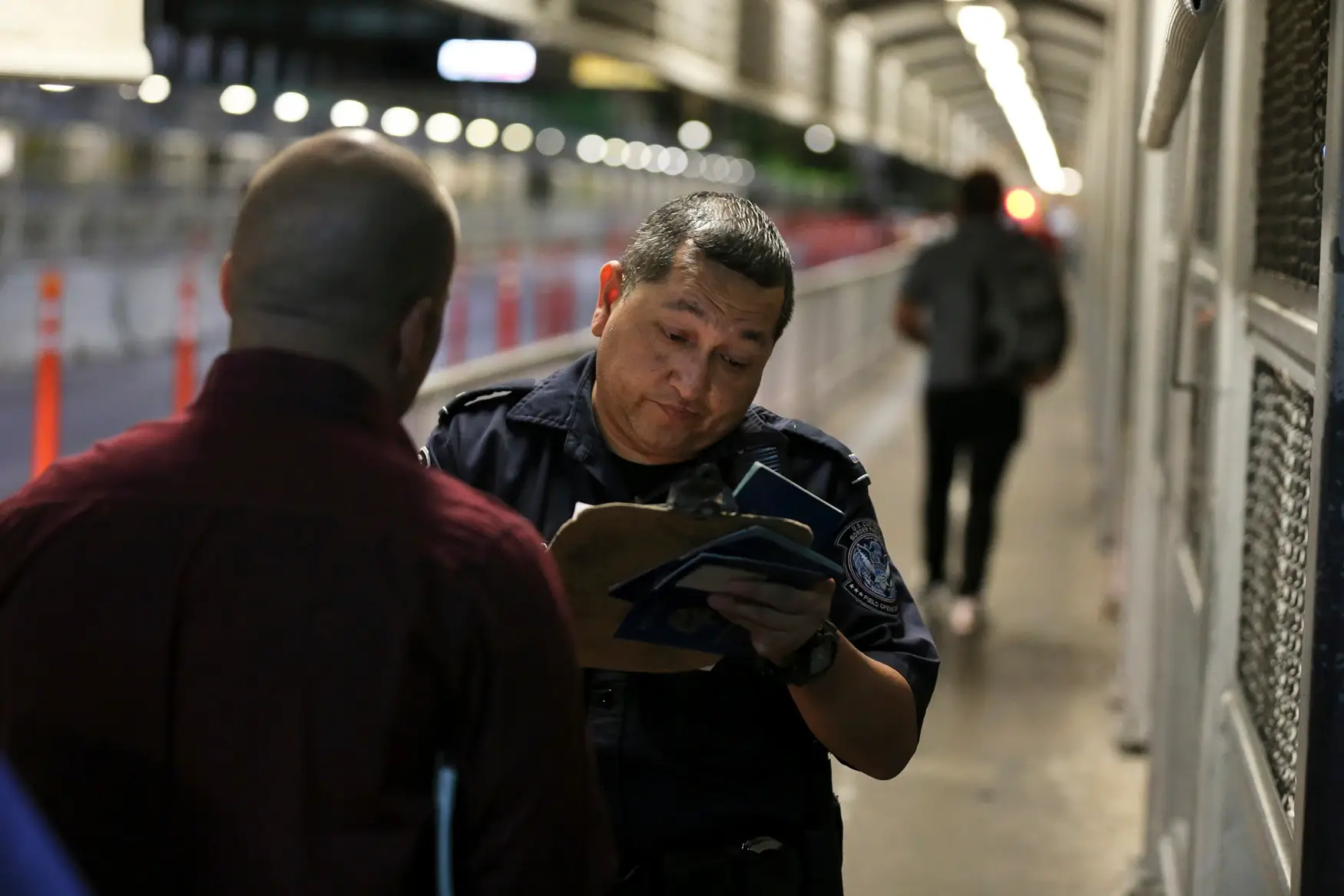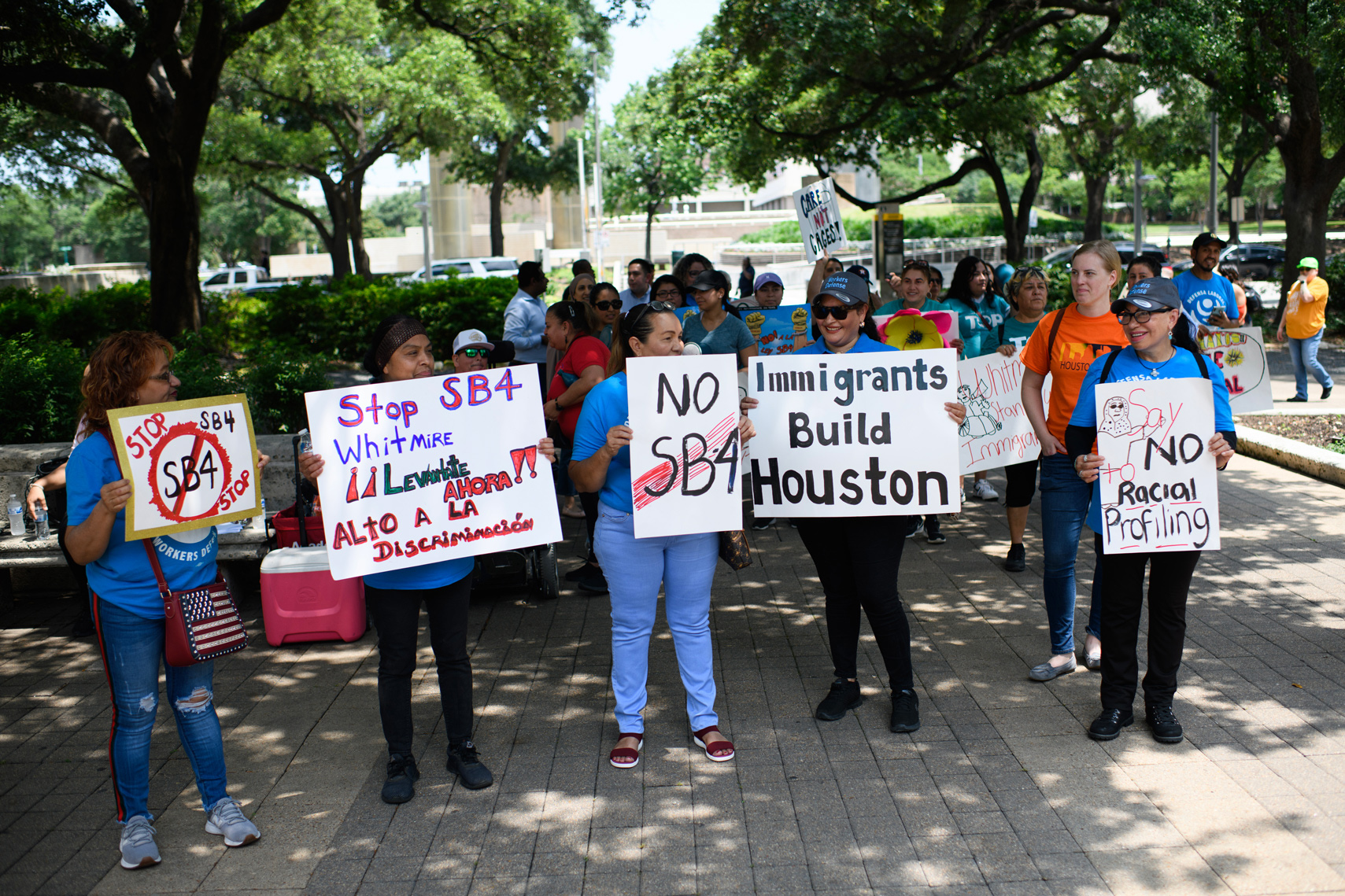|
Getting your Trinity Audio player ready...
|
After three months of requesting an appointment for an asylum screening through a U.S. government smartphone app, Jennifer couldn’t wait any longer. The 29-year-old Venezuelan, who was 5-months pregnant at the time, decided to cross the border illegally with her husband and 8-year-old son.
Since a May 2023 policy known as the Final Rule, migrants requesting an asylum screening at the U.S. border have been required to use a U.S. Customs and Border Protection app, known as CBP One. But the app is mired with technical difficulties, an arbitrary lottery system for assigning appointments, and accessibility issues, according to a new report by Amnesty International.
“The app is very much one of luck because we know many people who got an appointment quickly and others who waited months,” said Jennifer, who is being identified by first name only because of a pending immigration case. “We don’t know what the trick is.”
If migrants don’t use the app, they are ineligible for asylum unless “it was not possible to access or use the application due to a language barrier, illiteracy, significant technical failure, or other ongoing and serious obstacle,” the rule states.
Despite these exceptions, the app is mandatory in practice, according to Amy Fischer, director of refugee and migrant rights at Amnesty International USA and one of the report researchers. This violates international human rights and refugee law because it limits access to asylum, according to Amnesty International.
“The result in essence is that people are forced to wait in Mexico for months at a time as they're trying every single day to basically win the lottery to get an appointment with this application,” Fischer said. “While they're doing that in Mexico, they're under extreme risk of kidnapping or extortion of physical and sexual violence.”
The report, based on interviews with more than 350 asylum seekers along the U.S. Mexico border, documents human rights abuses surrounding the CBP One app, including technological barriers to accessing the app, privacy and surveillance concerns, and violence in Mexico while awaiting an appointment.
Kassandra Gonzalez, staff attorney for the Beyond Borders Program at the Texas Civil Rights Project
“The federal government has a legal responsibility to ensure that its technology is accessible and that we're not creating additional barriers to a very fundamental right of seeking asylum.”
In a statement, a CBP spokesperson said the app has increased the agency’s capacity to process migrants fivefold and is “one of many available pathways to migrants seeking to come to the US.”
“CBP One’s appointment scheduling capability is a key effort to incentivize noncitizens to use lawful, safe, humane, and orderly pathways and processes,” the spokesperson said.
Other immigrant rights organizations have extensively documented the abuses related to the app, including a March complaint filed by the Texas Civil Rights Project and Civil Rights and Civil Rights Education Enforcement Center alleging that the app is inaccessible to people with disabilities and violates federal disability law.
“The federal government has a legal responsibility to ensure that its technology is accessible and that we're not creating additional barriers to a very fundamental right of seeking asylum,” said Kassandra Gonzalez, staff attorney for the Beyond Borders Program at the Texas Civil Rights Project.
Many of these asylum seekers trying to use the app at the border are making their way to Houston, including Jennifer.
Her experience is one of the many cases of migrants who tried to do things the right way, but were thwarted by the inaccessibility of the app.
“We heard universally that people were trying every single day to comply to use the app,” Fischer said. “They would tell us, ‘I don't want to cross the other way. I want to be able to comply. I want to do things the right way. But I am facing such insecurity. I don't know how much longer I can survive here.’”

Error messages in the CBP immigration app
Jennifer registered through CBP One around May of last year. The registration is wonky for South Americans in particular, she said, because it does not recognize email addresses from domains in South America.
Registration is one of the biggest challenges for migrants using the app, according to the Amnesty International report. Half of the people interviewed received an error message during the registration process and had to start again.
There is no way to edit the registration information, so migrants often register again if they have an issue, leading to many duplicate registrations, according to Amnesty International.
The report also documented other frequent technical difficulties, including crashes and error and fraud messages. A requirement to upload a video or selfie that will be cross-referenced through facial recognition technology also frequently causes issues, in particular for Black asylum seekers. The email for troubleshooting questions only responds to queries in English, making it inaccessible to many asylum seekers.
After registration comes another obstacle: setting up an appointment. Appointments are scheduled daily based on a lottery system, so immigrants must check back every day to request one of the 1,450 daily slots. Thirty percent of appointment slots are reserved for the oldest users. The others are given out randomly.
Once registered, Jennifer entered the app every day throughout May, June and July to request an appointment. But she had no luck.
More than 60 people interviewed for the Amnesty International report waited more than three months for an appointment, including one who waited more than six months. Others received an appointment within days.
“The fact that CBP One assigns appointments randomly, and not in order, creates unnecessary stress, frustration and worry for asylum seekers as they have no way of knowing how long they will have to wait for appointments,” the report states.
Dangerous delays in asylum process
Waiting in Mexico also poses a risk to migrants, who are often targeted by corrupt authorities or criminal groups. Jennifer feels lucky to have only had one direct encounter in Mexico where she feared for her safety: authorities detained the family for days and threatened to deport them, but they were ultimately released.
“Of the 10 countries we passed, Mexico was the hardest and where we felt the most fear,” said Jennifer, who traveled from Brazil through the Darien Gap to eventually reach the U.S. border. “People from our country have to pass through the jungle, but we say that the jungle is nothing in comparison to Mexico.”
Jennifer plans to open an asylum case based on potential retaliation for leaving the Venezuelan armed forces. It's still unclear how the way she crossed will affect her case.
“What we're seeing is people being removed back to their home countries without a fair asylum assessment because of their inability to access the app and their inability to access the exemptions that should exist for the app,” Fischer said.
“Under the rule as it exists now, the human right to seek asylum is being wholeheartedly undermined at the border.”



